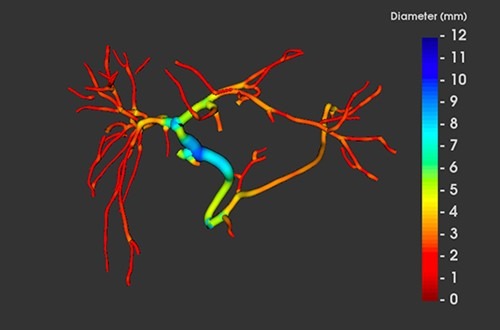Perspectum Diagnostics is set to unveil its new quantitative biliary imaging tool, Magnetic resonance cholangiopancreatography + (MRCP+), at the International Liver Congress being held between 8 and 14 April in Vienna, Austria.

Image: MRCP imaging technology. Photo: Courtesy of Perspectum Diagnostics.
MRCP+, the new product from Perspectum Diagnostics, is claimed to possess quantitative characterization leveraging advanced image processing methods.
The new technology can also enhance data from conventional MRCP without the need to inject contrast agent, enabling 3D visualization of ducts. MRCP+ is 510(k) cleared from the FDA and CE marked in Europe.
The company believes that accurate evaluation of the biliary system is essential for diagnosing and monitoring hepatobiliary diseases such as Primary Sclerosing Cholangitis (PSC), primary biliary cholangitis (PBC) and Biliary Atresia.
The assessment is also integral in liver transplant preparation and post-transplant evaluation.
MRCP is being used in the evaluation of biliary tree anatomy. The non-invasive method provides information that improves diagnostics, while minimizing the frequency of invasive procedures. But, MRCP is not quantitative.
At the event, Perspectum will also present the data collected from the MRCP+ studies conducted on PSC patients.
On 12 April, the company will present the data under the banner: ‘Quantitative Biliary Tree Imaging by MRI: Evaluating New Technology Across Patient Cohorts with Autoimmune Liver Disease’
Perspectum will present MRCP+ data that has given measurements, which could assist with objectively differentiating PSC patients. And it can bring to light the possibility of further investigations into quantitative MRCP as a PSC disease and therapy monitoring tool.
The company will present ‘Quantitative MRCP imaging: Preliminary observations in a cohort of paediatric patients with liver and biliary diseases’ at the event.
Under the banner, Perspectum will reveal how MRCP is limited in paediatric assessment, where biliary changes could be less advanced. Its quantitative MRCP’s potential in paediatric patient evaluation, particularly those with overlapping autoimmune hepatitis and PSC.
However, the measures provided by MRCP+ could objectively differentiate patients with PSC from healthy or other liver disease patients, with the potential for monitoring and severity assessment applications.
Perspectum will also present ‘Quantitative MRCP Imaging (MRCP+): Accuracy, repeatability and reproducibility evaluation in healthy and liver disease’ on the same day.
The study examined healthy and liver disease subjects and found that MRCP+ could offer an easily interpreted, quantitative measurement and performance profile characteristics.
